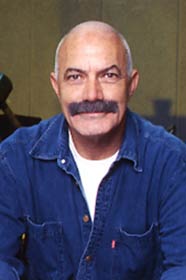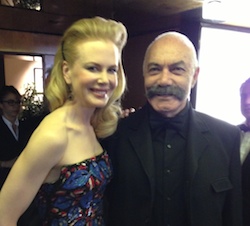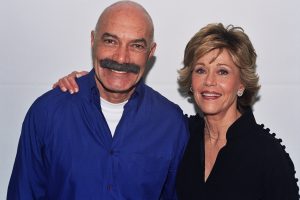For her tale of childhood soulmates who reconnect later in life, the playwright turned first-time filmmaker employed a number of unique “exercises” for her actors to hit the right notes.

For Greta Lee and Teo Yoo, who play childhood soulmates Nora and Hae Sung, that meant not being allowed to physically touch until the very moment their characters do onscreen, when they reunite as adults in New York City. “It becomes this really big, kind of cosmic thing to create this weird emotion of longing for each other,” Yoo says. “That created a certain type of chemistry and this wonderful tension on film.”

“It’s OK if a love triangle is how you want to watch it, but that’s not the intention,” says Song, whose own experience sitting between her American husband and Korean childhood sweetheart at a bar five years ago sparked the idea for the film.
“To me the movie really is about taking the moment to say our proper goodbyes to parts of ourselves.”
When Nora, in her 20s, first meets Arthur at a writers retreat in Montauk, she tells him about in-yun, a Korean concept about how certain souls are destined to reconnect over again through multiple lifetimes. That’s how many of the cast and crew felt about their participation in the project.
“Celine joked to me that we were absolutely married at one point in our lives, and kind of recently, too, in the last 500 years,” says Lee, who plays the filmmaker’s avatar.
She initially wasn’t cast; Song envisioned a younger trio of leads, built around an actor for Hae Sung who became unavailable. The director then realized she needed to build the story around Nora, and that Lee was the one. “Greta had both the amazing fear and the courage in going forth in her first role as a lead and also one of her first forays into the kind of vulnerability and humanity she’s being asked [to show] in every moment of the film,” Song says. “She knows that’s scary, and she’s in touch with it.”


While the German-born Yoo and John Magaro, who plays Arthur and in real life is married to a Korean American woman, had to calibrate their accents and mannerisms to fit their characters, the two men faced a unique challenge on set. Song, in another of her uncommon exercises, did not have them meet at all until their characters did on camera.
“There’s timing and budget constraints, so keeping two actors apart is not an easy thing,” Magaro says. “But we had such an amazing crew who really believed in Celine’s vision and were willing to go the extra distance to make things like that happen.”
Song instructed Lee — who felt at times that she was making two different movies, in two different languages — to tell each of her two partners what it was like filming with the other. Yoo jokes that their director is a sadist, Magaro calls her a sociopath, but Song says it was all in service of the story. “I was building jealousy, because if you don’t feel jealous, then you don’t care. The thing is, you have to overcome jealousy because you care about her so much.”
Yoo and Magaro finally met in person, in character, as Hae Sung awkwardly steps into Nora and Arthur’s apartment, and that first take is the one that ended up in the final cut. “What’s important is the men didn’t get to modulate their own chemistry to contrast to the other guy’s. [The exercises] were a way to help them focus on their own connection with [Lee],” Song says.
Film like a Knife
“I wanted the whole film to feel like a knife, and it’s got to build to the point where it’s sharp and you’re going to stab. By the time we enter the third act and they meet each other, it’s like an explosion.”
The playwright is making her debut feature. “When we were putting it together, we had to move quickly, which is part of why we [producers] all came back together in this alignment, because we needed someone you had a shared communication style with,” says 2AM founding partner David Hinojosa, who reunited with former Killer Films colleagues Christine Vachon and Pamela Koffler to produce Past Lives. “Sometimes you’re competing for really terrific department head, and it was like, ‘Just take 10 minutes and read 10 or 15 pages, and I’ll see you on set.’ It was magic.”


Cinematographer Shabier Kirchner and production designer Grace Yun were the first to board the project, which was originally slated to shoot in 2020. COVID-related complications, with an intercontinental shoot, delayed production to the second half of 2021, which had the effect of unusually long prep time for the crew and the opportunity to undergo more of Song’s unique exercises. She had Kirchner and Yun read through the script multiple times with her, assigning a different character to them each time. “We were acting, which is something I don’t ever do, and getting into their headspace early on,” Kirchner says. “I got a great sense of the physicality behind how these characters will be moving through the space, to see their bodies and the proximity to one another and the subtleties of communication without words. That became really evident during those initial reads and was such an invaluable experience, and a tool I want to bring with me going forward.”
The film’s final sequence is deceptively simple. Nora walks Hae Sung to the Uber that will take him back to the airport, and then she walks home to Arthur. Done primarily with tracking wide shot, the camera movement tells the story: Nora and her childhood friend walk from right to left — into the past — and then she leaves him there, returning alone for the journey from left to right and back into the present. That was intentional, unlike the cinematography for an earlier sequence in which Nora and Hae Sung’s sightseeing date ends in front of Jane’s Carousel in Brooklyn Bridge Park. “We wanted to do this elaborate camera move where the camera would 180 around them while the sun is setting, and then when we got to that sequence, everything went wrong,” Kirchner recalls of the eventual static two-shot they captured. “I just had to grab the camera and hold it in place. I was super devastated after that, but now seeing the scene cut together, it is one of the most significant images, with that carousel moving anti-clockwise behind them, trying to rewind the hand of time.
“There are moments in life when you hope for a project where this perfect storm is happening with the chemistry, and this is what happened this time,” Yoo says. “We were talking about in-yun all the time, all day, every day. Not [just] those who were in front of the screen but also behind, like Shabier, the lighting guy, the people who were hauling our cables. They were looking at us and crying at the end.”


COURTESY OF JON PACK
Parallel Journey
“Past Lives is the story of a woman who is going through self-revelation, and Greta and I both were going through our own self-revelation,” says Song. “For her, finding herself as the main character of her own story, and also her Korean-ness. And for me, that I’m a filmmaker. We were having a parallel journey.”










